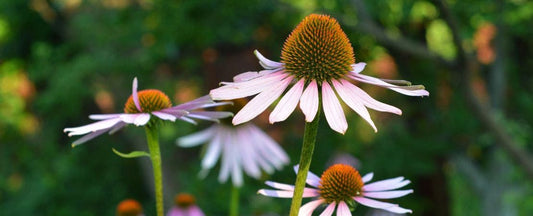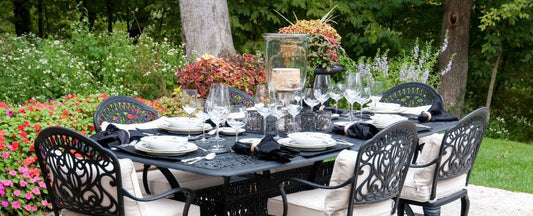How to Grow a Garden That You Love

Begin with Thinking About Time and Expectations
Your yard or balcony is a little patch of nature in which to relax. A place to wander, or sit, and read in bucolic comfort. But too often, it becomes another set of chores. The plants need weeding or watering or something else at inconvenient times. How do you restore the balance and the enjoyment of your green space?
First, have a garden style that suits you, with all your quirks. Each of us grew up surrounded by some kind of yard and gardens. But there are dozens of types of gardens: ones with formal hedges and paths, ones that feel like a forest retreat, ones with small plants in neat rows, ones that are almost entirely a grassy lawn, ones arranged around water features, ones that are a chaotic meadow of flowers, and more. If you choose a garden that fits your life, it will bring happiness. For example, if you do not like fussing with plants but enjoy standing outside among butterflies and birds, create that. Grow trees to shade the paths and let the area under them fill with leaves. Conversely, if getting up to your elbows in dirt, smelling its rich earthy smell, gives you joy that carries over into the work week, that should be your yard. Dig up a big area, plant lots of seeds and transplants, and watch them grow. Or anything in between.
Choosing a Garden that Fits You
Obviously, the first step is to know what you like. What part of the yard and garden feel like chores? Which tasks end too soon?
You might dislike weeding. You are not alone, so you can find many suggestions to reduce weeding. Plant a cover crop of something, of clover or strawberries, to crowd out the weeds. Smother weeds in mulch. Let shrubs and trees get big and deeply shade everything. Perhaps, redefine “wildflower” to include almost all the plants in your yard that you did not plant, and grow wildflowers.
Another part of gardening that keeps people from enjoying it is the bending. You don’t have to put up with that. Install raised beds for annual plants or for the little plants that you love but rarely bend down to appreciate. Plants raised up to a comfortable height do not have to be in a big clunky trough, you could put flowerpots on a bench, on an artistic step ladder, or on a wall. Be creative.
A rock garden is a low maintenance, simple and pleasing garden. Fill a spot with a pile of rocks that are attractive for their own sake. Then plant small perennials, especially succulents like stonecrops (Sedum), hardy iceplant (Delosperma), and sempervivums here and there on the pile. These pretty plants attract pollinators, are bright and cheery, and spread slowly.
You can reduce the chore of mowing by planting “lawns” that are not grass. All kinds of ground covers, thymes, creeping speedwells (Veronica), and creeping phlox, for example, will cover the ground and do not need mowing. Beautiful and easy, they are much less work than the traditional lawn of grass.

How Much Time Do You Have for Gardening?
Before getting very far into a garden make-over, consider whether some of the problem with your garden is that your life has periods when it is easy to get into the yard and other periods when you don’t have time for it. If so, including timing in your garden planning. Choose plants that will not need attention during your busy times. If late spring is usually chaotic, do not plant potatoes and onions (buy them at the grocery store), and you won’t have the sets nagging at you as they sprout in the garage. Instead, grow apples to harvest in your calm fall. There are a lot of choices, every plant has its seasonal rhythm. For another example, strawberries, raspberries, and blackberries will produce fruits in steady but not overwhelming amounts over most of the summer and into the fall. That could be a delight or a task you get behind on (“oh no! I haven’t picked strawberries in two weeks!”) An intense month of picking and freezing apples might be less frustrating. Match the garden to your life.
One effective way to manage the calendar is to take advantage of the flowering season in which your flowers grow. You can plant species to have a dramatic spring bloom, using for example crocuses, daffodils, lilacs, or create a brilliant fall garden, featuring, say, echinaceas, chrysanthemums, and hibiscuses. Or, grow plants that produce lots of flowers, all the time. For that, look for varieties that, once they come into bloom, flower “until frost” or “late fall,” like gaillardias and geraniums. If you like change, plant a series of flowers with relatively short blooming seasons and watch them burst into bloom in sequence. Whatever pattern feels right to you.

Here are some ideas to help break out of the one-yard-fits-all mindset:
- Buy big pots of annuals in the spring and put them out in the yard. Let everything else be evergreen trees and shrubs with minimal maintenance. All you will need to do during the summer is check that the potted flowers do not dry out. Enhance their blooming by pinching off dead flowers once in a while. That’s it, enjoy the garden.
- Another low maintenance garden design features trees that grow tall, such as magnolias, arborvitae, maples, and oaks, and lets them dominate the view. Underneath shorter plants provide interest. The look can be stable, with evergreens like junipers, rhododendrons, and privets or can change dramatically with the seasons, for example with redbuds, hydrangeas, and weigelas transforming from bare branches in winter to patches of bright color in summer. In this garden, paths wander between the trees and shrubs, with no space for grass that needs mowing. Let the leaves fall where they may, they will break down into nutrients, fertilizing the plants. Check hardiness zones and water requirements so that the plants will flourish on the natural rainfall and tolerate the extra-warm summers we have been having. This is a wonderful green place that requires minimal effort.
- Live in a yard full of food. Grow fruit trees, edible flowers, and vegetables. There are a dozen ways to do this, from planting lots of annuals to setting out fruit trees so that the yard is an orchard. Planting annual vegetables like lettuce and radishes requires oversight and work but can be very rewarding. Fruit trees, like apples, once planted, produce for years. They also make a mess if you don’t harvest the fruit. Most fruit trees should be regularly pruned to increase fruit production and so they don’t grow so tall that the fruits are out of reach. These are small chores compared to the joy of going to the garden and bringing in fruits and vegetables for dinner. And don’t treat the food plants as having just one function. Apple trees look marvelous when in full bloom! Grape vines can be trained up a trellis to provide privacy. Strawberries are a terrific groundcover.
- Make spring gardening easy. If you always get behind setting plants out in the spring, you could grow shrubs, trees, and perennials so there is no big spring push. Add any new plants in the fall. Many annuals including vegetables, can be raised in the pots they are purchased in, reducing the need to transplant. Alternately, you can grow perennial fruits and vegetables like asparagus, apples, and kiwifruit. Shift the times for garden work to suit you.
- Make fall gardening easy. If the fall is predictably busy, plan to ignore the garden then. Instead, grow plants that bear flowers and fruit starting in spring, anemones, roses, asparagus, so that by fall the garden is resting and so can you.
- Grow a twilight garden. If you are only at home in the evenings on workdays, load your yard with white and yellow flowers. They are particularly lovely in the twilight, as you settle in with a large iced tea. Try night-blooming flowers like nightglow honeysuckle and night-blooming jasmine which release amazing scents as it gets dark.
If your garden is only the balcony, try some of these ideas anyway; a surprising number of plants will grow well and flower and fruit abundantly in pots.
The Right Tools for the Garden You Choose
You can enhance your enjoyment of your garden and yard by having the right tools. Trowels and shovels come in many sizes and with ergonomic handles; grandmother’s rake might not be a good fit for you. If getting down to the earth is a problem, look seriously at light-weight stools you can drag around and pads to protect your knees. Gloves come in all sorts of sizes and materials, try different ones until you find ones that you love. Likewise, watering can be made much easier if the buckets are a size you can conveniently carry, the hose is long enough, the hose fittings are tight. You’ll be surprised what a difference good tools make.
It Is Your Garden
With the right plants with the right timing, your garden will not be a responsibility but a place of joy.


